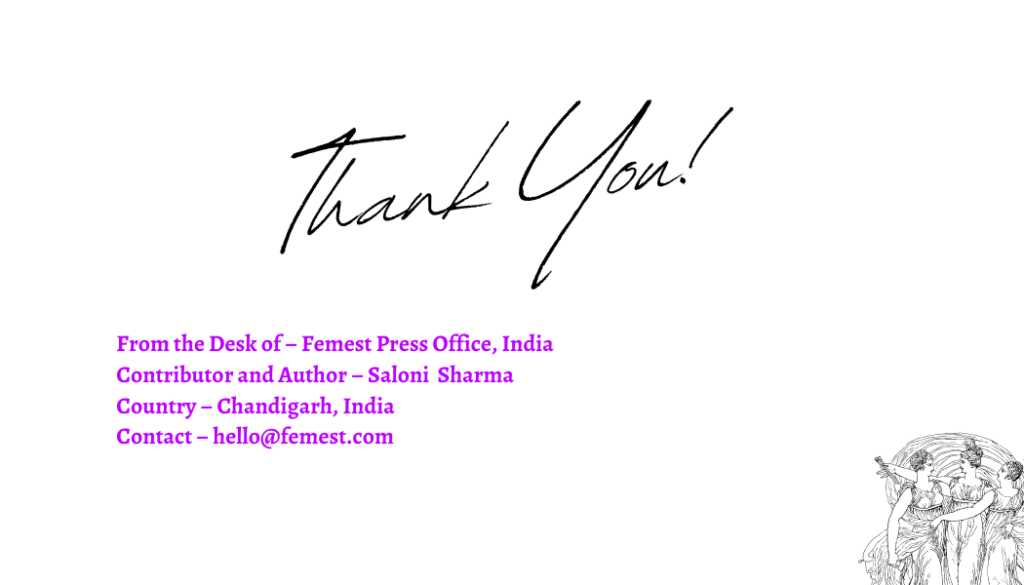In the corporate world, entrepreneurship is quickly emerging as a new trend. In this situation, women are not only standing shoulder to shoulder with men but have also begun to carve out a niche for themselves.
Women are gradually establishing themselves as industry leaders with careful preparation and effective implementation of their creative ideas.
While women’s entrepreneurship plays a growing role in employment creation and countries’ social and economic development, its interactions with culture and other factors are currently understudied. Eight empirical pieces that explore various facets of the dynamic connection between gender and culture in influencing women’s entrepreneurship are included in this special issue.

Women entrepreneurs contribute to economic growth, social advancement, and employment creation. Their entrepreneurial endeavours are ingrained in a complex and multilayered cultural milieu, from the initial idea to the gestation process, commercial operations, and venture growth. Thus, gender and culture interact dynamically, influencing gender roles, identities, and the economic and social context of women’s businesses.
How to become a successful Entrepreneur and what all you need.
Planning is the first and most crucial phase in starting a business, and it starts with defining short- and long-term objectives. This facilitates execution and aids in improved job organisation, enabling you to chart and monitor your progress.
Establishing a firm becomes extremely challenging and almost impossible without a startup investment. According to research, 70% of the SMEs owned by women in developing countries are either shut down due to a lack of resources and a robust support system by the financial institutions, or just 30% of women-owned SMEs are sustaining themselves. As a result, formal women-owned SMEs experience an annual credit shortage of $300 billion.
Another significant obstacle is managing finances, which may be broadly divided into two categories: first, the sources of funding, and second, the effective use of funds that are at hand. Personal savings or expert assistance, such as from banks or other financial organisations, can be sources. With particular strategies and programmes for women entrepreneurs, the government has also recently begun to assist entrepreneurship. The government is committed to empowering women by giving them various opportunities. In actuality, lending to female entrepreneurs carries a 30–50% lower risk for the banks.
Women are also given preferential treatment because loans made to them are 100% more profitable for banks than loans made to their rivals. Yet just 3.1% of lawsuits are funded by official sources. Utilizing resources effectively is a difficult task that requires expert advice and firsthand knowledge gained from experience.

In actuality, 75% of all the financial requirements of female entrepreneurs are met through informal finance sources.
One can also use other resources such as business television shows and online platforms/forums to find solutions and ask for assistance in pressing issues. The right use of money cannot be achieved only by asking professionals for advice; it also requires thorough independent research.
In the end, only you can feel, consider, and decide what is at stake regarding your strategy and money. Smart, cautious, and attentive financial management should align with the company’s overall needs and objectives.
Getting the Results – Execution and reaching corporate goals, which call for a committed and focused approach, are the next major impediments.
To gain an advantage, keeping track of market and industry trends aids in making predictions about the future. An entrepreneur can stand out from the crowd by having original and innovative ideas that have undergone a thorough feasibility assessment.
To create a thriving business, women must also develop their unique identities. According to a World Bank study, women-led businesses are disproportionately concentrated in the retail and service industries, which typically have lower profits and fewer opportunities for expansion, and are rarely found in more financially lucrative industrial sectors like construction, electronics, or software.
“Women are thriving on their own terms.”
It is evident that there is a significant increase in the number of female entrepreneurs worldwide.
This surge can be attributed to various factors, including the need for greater financial stability and independence and the desire to have greater control over one’s career path. Whatever the reasons, it is clear that female entrepreneurship is on the rise, and this trend will likely continue in the years to come.

